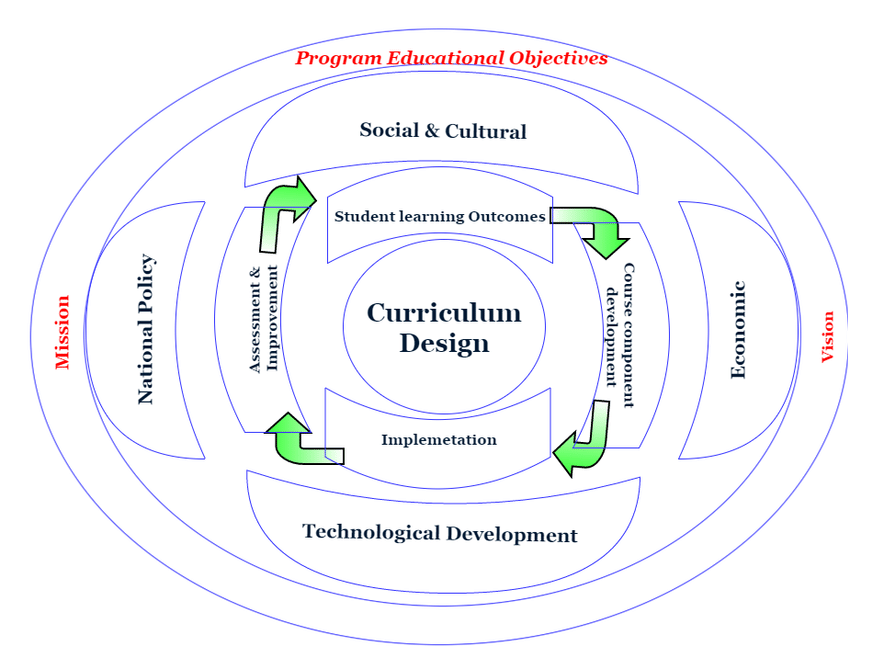What is Curriculum Design?

Curriculum design is the systematic process of planning, organizing, and structuring the components of an educational curriculum for teaching and learning purposes. It includes defining objectives, selecting content, deciding on learning experiences, organizing that content and those activities, and finally evaluating both the learning outcomes and the curriculum itself.
This design does not occur in a vacuum: it is influenced by educational theories, educational policies, societal needs, student profiles, available resources, and the needs of the cultural environment.
Important Theoretical Models in Curriculum Design
Several models have served as references for structuring curricula. Below I describe some of the most cited:
Ralph W. Tyler’s Model (also known as the Tyler Rationale)
Formulated in 1949. This proposal suggests that all curriculum design should answer four fundamental questions:
What educational purposes should the school seek to attain?
What educational experiences can be provided that are likely to attain these purposes?
How can these educational experiences be effectively organized?
How can we determine whether these purposes are being attained?
Some relevant elements:
Tyler considers contemporary society, student needs/interests, and disciplinary knowledge as sources for objectives.
He introduces philosophical and psychological screens to filter objectives before specifying them and bringing them into the classroom.
Advantages: clarity, systematic structure, applicability.
Limitations: can be rigid, less attention to interactive processes, diverse cultural contexts, or teacher participation in design.
Hilda Taba’s Model
Presented in 1962, Taba proposed a more “grassroots” model, starting from the diagnosis of student and contextual needs.
Stages of Taba’s Model (generally seven): Diagnosis of needs.
Formulation of objectives.
Selection of content.
Organization of content.
Selection of learning experiences.
Organization of activities/experiences.
Evaluation (what to evaluate and how).
It provides greater teacher participation, connection to specific student needs, and flexibility.
Backward Design / Understanding by Design (UbD) Model
This approach proposes starting by defining desired learning outcomes before selecting teaching activities or instructional materials.
It focuses on what acceptable evidence will demonstrate that students have achieved those outcomes, and then on how to organize instruction to achieve them.
Competency-Based Model
This model has become very relevant in many current educational systems. In this model, the curriculum is organized not only by content but by competencies: skills, attitudes, and knowledge that the student must demonstrate in real contexts.
It implies that assessment, content, and learning experiences are aligned towards these competencies, not just the mastery of information.
Key Principles That Should Guide Good Curriculum Design
For a curriculum design to be of high quality, it is recommended that it adheres to certain principles. Some of them:
Coherence: objectives, content, activities, and evaluation criteria should be aligned.
Relevance/Appropriateness: content should address the social, cultural, and economic needs of the student’s context.
Flexibility: adaptability to different learning styles, diverse resources, and possible changes.
Sequencing and Progression: organizing content from simple to complex, known to unknown.
Integration: whether interdisciplinary, horizontal (content connected within the same level), or vertical (between educational levels).
Continuous Evaluation and Feedback: both of student learning and of the curriculum itself, for adjustment and improvement.
These ideas emerge from the models of Tyler, Taba, Wheeler, etc.
Suggested Process for Designing a Curriculum
Based on models and theories, a practical process could be as follows:
Analysis / Diagnosis
Study the learner: interests, prior knowledge, culture, socioeconomic context.
Review the social environment: demands of the current world, required knowledge, professional requirements.
Available resources: materials, technology, time, teacher training.
Definition of Objectives and Competencies
Establish what learners are expected to know, be able to do, and what attitudes they should possess.
Focus on competencies if the system demands it.
Content Selection and Organization
Choose content (theoretical, procedural, attitudinal) that is useful, valid, appropriate to the context and level.
Organize (sequence) this content logically.
Design of Learning Experiences
Activities, methods, strategies that allow students to interact with content, construct their learning.
Consider a diversity of methodologies for different learning styles.
Evaluation
Evaluate student learning with appropriate instruments.
Curriculum evaluation: did it work? What was actually learned versus what was planned?
Feedback and Adjustment
Use evaluation results to improve the curriculum.
Adjustments in content, methodology, timing, resources.
Challenges and Critical Considerations
Cultural context and diversity: a curriculum designed out of context may not be relevant or may marginalize minority cultures or different learning styles.
Teacher participation: teachers require real participation; if it only appears as a formality, the design loses practical meaning.
Material, infrastructural, and human resources: many good proposals fail in their implementation due to lack of resources.
Rigidity vs. innovation: some highly structured models can limit creativity, response to unforeseen changes (e.g., health crises, technological changes).
Meaningful evaluation: avoid focusing solely on standardized tests; seek authentic and formative evaluation models.
Conclusion
Curriculum design is a central task in education: to a large extent, it determines whether students learn in a relevant, useful, and meaningful way. Models such as Tyler’s, Taba’s, or backward design, among others, offer proven theoretical frameworks for organizing this work. However, true success lies in adapting them to the context: student needs, institutional conditions, social values, and available resources.
